Mauritania. Nouakchott has succeeded in containing jihadism.
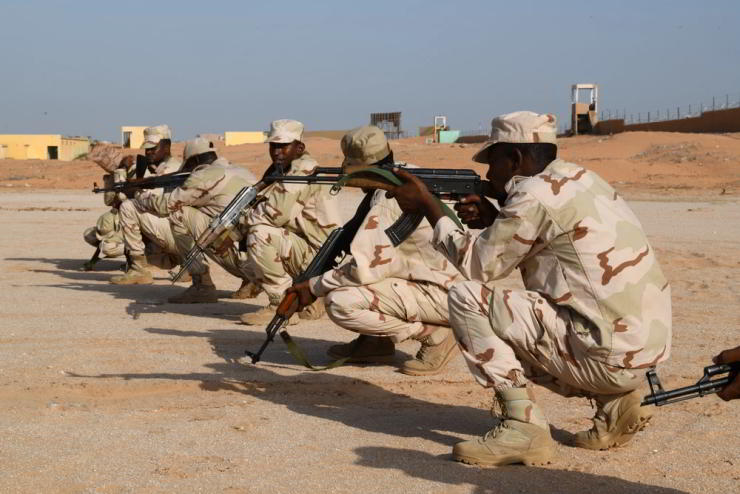
The country is emerging as an exception in the Sahel region by stemming the tide of jihadism that has engulfed neighbouring states, through a combination of military, political, religious and social measures. Camel riders and women religious leaders are among the heroes of this success story.
According to the Dakar-based Timbuktu Institute, the Sahelian branch of Al Qaeda, Jama’at Nusra al-Islam wal Muslimin (JNIM) – also known as the ‘Support Group for Islam and Muslims’ – is making real progress across the entire region. However, Mauritania is emerging as the exception, and a quite successful one at that.
The last jihadist attack in the country took place in December 2011, when a commando fired on a Mauritanian gendarmerie post at Adel Begrou, kidnapping an officer before escaping across the border into Mali. Before this, Mauritania had experienced attacks on foreign embassies and the murder and abduction of Westerners since 2005, which culminated in the cancellation of the Paris-Dakar Rally in January 2008.Since then, under the leadership of President Mohamed Ould Abdel Aziz, the authorities have developed a comprehensive anti-terrorism strategy. The government invested heavily in the defence sector.
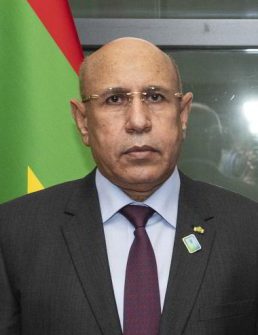
Mauritanian President, Mohamed Ould Cheikh Mohamed Ahmed Ould Ghazouani. (Photo: EU)
The aim was to make the army a more attractive prospect for soldiers than the jihadists, and wages were increased considerably.
Defence expenditure rose from $106 million in 2009 to $141 million in 2019 and $251 million in 2023, enabling the purchase of modern pick-up trucks and surveillance radars that surpassed the rebels’ equipment.New military bases were established along the 2,200-kilometre-long porous Malian border. These included the Lemreya base, which straddles the border between Algeria and Mali. This area had previously been used as a sanctuary by jihadists and traffickers. The Special Intervention Groups, which are highly mobile military units, established their headquarters here to operate in the desert. They were supported by light aircraft.
Unlike the other members of the Sahelian Alliance (Mali, Niger and Burkina Faso), who are struggling to cope with jihadist threats, Mauritania has maintained military cooperation with France, consisting primarily of training its special forces. While Niger closed French and American military bases, Mauritania strengthened its ties with the United States through the Trans-Sahara Counterterrorism Partnership and joint training missions. At the same time, Mauritania is cultivating good relations with Moscow, as demonstrated by the visit of the Russian foreign minister, Sergei Lavrov, to President Mohamed Ould Cheikh El Ghazouani in February 2023. Lavrov expressed the Kremlin’s support for Mauritania in its fight against jihadism.
In addition, Mauritania has invested considerably in developing the intelligence gathered by the Mehari units, whose officers patrol the desert on camels in eastern Hodh Ech Chargui. They maintain a presence among the nomadic populations who permanently cross the borders with their herds, and who are potential targets for jihadist recruitment.
These camel riders, who are part of Mauritania’s National Guard, are often dressed as civilians and can reach every part of the vast country discreetly. Meanwhile, checkpoints are scattered across the country. The northeastern region of Mauritania, which is mostly uninhabited, has been a restricted military zone since 2008 to facilitate surveillance and prevent it from becoming a safe haven for jihadists.
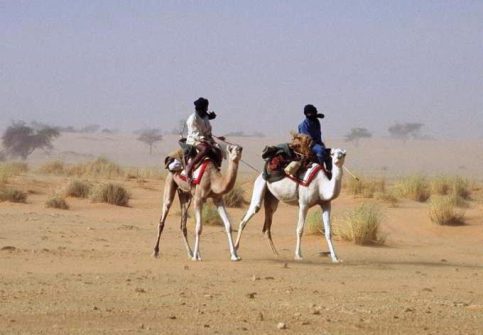
Mauritania has invested considerably in developing the intelligence gathered by the Mehari units, whose officers patrol the desert on camels. File swm
Mauritania has revived the French colonial tradition of army units riding camels. Until a few years ago, the desert riders’ unit numbered just 50 men, but by 2019, the ‘Nomad Group’ had grown to comprise 150 riders and boasts a herd of 400 camels. They have also received a grant of several million euros from the European Union.
Some of these Meharists are recruited from Bedouin tribes, to whom they provide services such as tracking down cattle thieves and offering medical care. The key to the strategy is controlling the water sources and thus the desert. The strategy appears to be quite successful. Indeed, Chad and Niger, two other Sahel countries affected by jihadism, have expressed interest in the Mauritanian approach.
However, the strategy is not limited to military aspects. As the core of the jihadist offensive is spiritual and aims to impose a theocratic order, the Mauritanian authorities have also decided to counter jihadist propaganda on religious grounds.
When the government realised that Al-Qaeda had recruited Mauritanian citizens in the early 2000s, it mobilised imams to produce an ideological response to the jihadist narrative. In an attempt to prevent its citizens from becoming radicalised, Mauritania organised a nationwide theological debate and implemented a system to control the ideology preached in mosques.
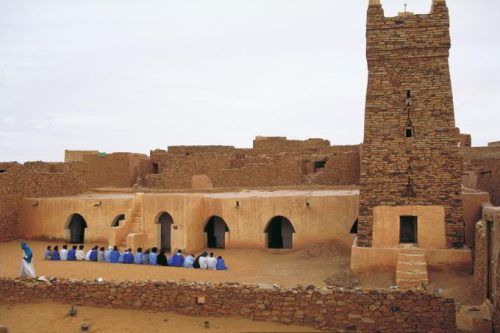
Mauritania organised a nationwide theological debate and implemented a system to control the ideology preached in mosques. File swm
It also decided to take action in the deprived, sensitive suburbs of the capital, Nouakchott, by initiating a dialogue with local communities. The Ministry of Islamic Affairs and Education and the Association of Women Heads of Families launched the ‘Mourchidates’ project, in which women religious guides visit radicalised Muslims in these neighbourhoods to prevent violent extremism.
Fifty Mourchidate women from the capital and the rest of the country were appointed. These women, who are teachers in Quranic schools, graduates in Islamic sciences, or community leaders, will deconstruct concepts that have been manipulated by jihadists, such as takfir, caliphate, imamat and jihad. This initiative is supported by the UNESCO project, ‘Strengthening Women’s Leadership in the Prevention of Violent Extremism through Criminal Justice, Social Cohesion and Cultural Identity’. As jihadist ideology has flourished amid poverty and repression in other Sahelian countries, the Nouakchott authorities are trying to demonstrate to their citizens that the jihadist proposition is less appealing than a functioning state that provides services such as drilling wells, caring for livestock and building medical centres to meet the needs of nomadic communities.
A key element of the strategy has been the implementation of a policy that combines firmness and forgiveness for those who repent. During a government-led dialogue in 2010, dozens of detained radical Islamists signed a renunciation of violence, and several former jihadists were reintegrated into society instead of being killed.
The absence of terrorist attacks for over a decade is testament to the success of the strategy. However, some experts suspect that the Mauritanian government has paid a kind of non-aggression price to Al-Qaeda. ‘Everyone agrees there is a pact. That’s a widely accepted fact,” former CIA agent Michael Scheuer told the Arab Weekly, which published a story on the matter in May.
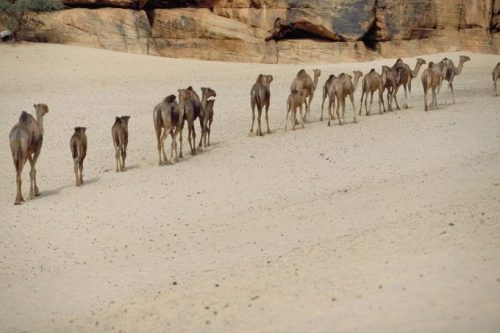
The jihadists are investing in livestock, logging and smuggling activities. File swm
Accordingly, JNIM fighters cross the border into Mauritania to find a safe haven, provided they don’t carry weapons. However, the Mauritanian authorities firmly deny the existence of such an agreement. Some critics also point out that, in return for supporting the fight against hate speech and violent extremism, the government has appointed some Salafist preachers to influential positions.
At the same time, in such a troubled region, the fight against the jihadist scourge is never-ending and success is fragile. There are still many challenges. One of the greatest is the presence of between 250,000 and 300,000 Malian refugees in the M’bera refugee camp and the villages of the Hodh Chargui border region. In a report published on 27 April, the Timbuktu Institute warned that JNIM was extending its influence in the tri-border area between Mali, Mauritania and Senegal.
Accordingly, the jihadists are investing in livestock, logging and smuggling activities in the area, generating revenue that enables them to expand their networks. These activities also provide them with a means of transporting weapons and explosives. The threat should not be underestimated: JNIM is indeed attempting to infiltrate its members from Kayes, in western Mali, into Mauritania and Senegal. (Open Photo: Soldiers of the Mauritanian Army in training section. DVIDS)
François Misser



